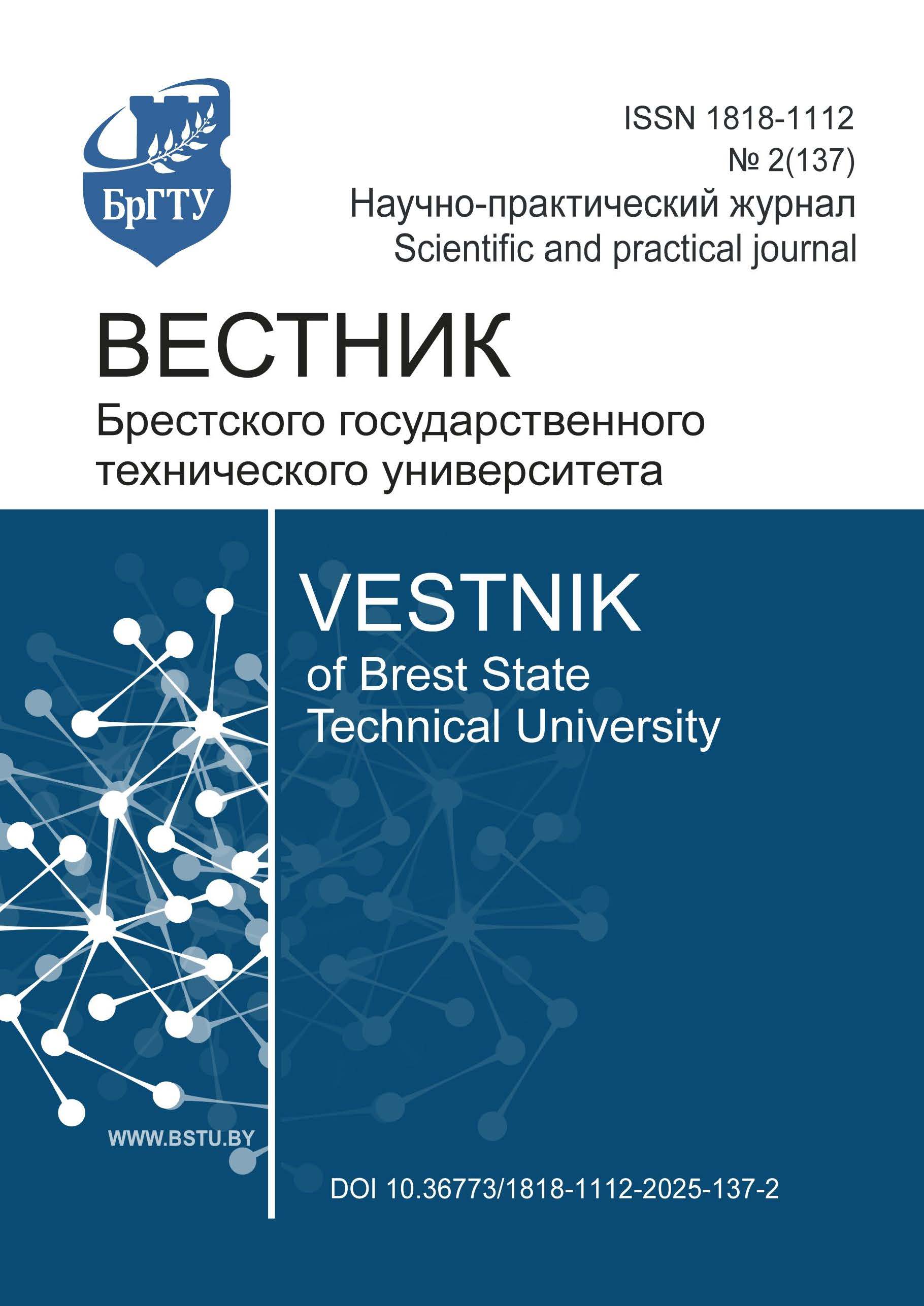ПРЕИМУЩЕСТВА ОПТИЧЕСКИХ МЕТОДОВ ИЗМЕРЕНИЯ РАЗМЕРА И ДИСПЕРСНОСТИ ГАЗОВЫХ ПУЗЫРЬКОВ В ВОДЕ
DOI:
https://doi.org/10.36773/1818-1112-2025-137-2-94-98Ключевые слова:
дисперсность газовых пузырьков, диспергатор, пузырьки, газо-жидкостная дисперсияАннотация
В статье показана актуальность изучения характеристик газовых пузырьков, образующихся при аэрации, озонировании или других способах подачи газа в жидкость, и рассмотрены существующие оптические и физико-технические методы измерения размеров газовых пузырьков в воде и анализа их дисперсности. Приведены достоинства и недостатки каждого метода.
Акцентировано внимание на двух методиках анализа фотографий для определения дисперсности пузырьков газа. Одна методика позволяет осуществлять полуавтоматический анализ фотографий, т. е. обработка фотографий делается вручную, а компьютерная программа производит математическую обработку полученных результатов. Другая методика выполняет полностью автоматизированную обработку фотографий при помощи искусственного интеллекта и математический анализ полученных результатов.
Подробно описан алгоритм полуавтоматического определения дисперсности сфотографированных пузырьков газа, образующихся в баке с прозрачной стенкой, заполненном водой, при помощи компьютерной программы Revit. Описаны преимущества данной компьютерной программы в сравнении с другими программами.
Показана возможность использования более продвинутых алгоритмов автоматического распознавания контура пузырьков на снимке при помощи искусственного интеллекта и автоматический подсчет их количества, величины и диаметра. Приведена схема, на которой показана конструкция специального приспособления, позволяющего реализовать автоматическое распознание и анализ дисперсности пузырьков газа. Показаны достоинства и недостатки полностью автоматизированной методики обработки фотографий.
Обоснован выбор оптического метода фотоанализа с использованием полуавтоматического определения дисперсности пузырьков газа с целью оценки эффективности работы диспергатора. Разработана конструкция экспериментальной установки для анализа дисперсности газовых пузырьков, образующихся при помощи различных видов диспергаторов. Приведена схема экспериментальной установки.
Библиографические ссылки
Перепелкин, К. Е. Газовые эмульсии / К. Е. Перепелкин, В. С. Матвеев. – Л. : Химия, 1979. – 164 с.
Золотов, А. В. Способы получения газовой дисперсии в объеме жидкости / А. В. Золотов, И. С. Багреева // Нефтепереработка и нефтехимия. Научно–технические достижения и передовой опыт. – 2017. – № 1. – C. 18–22.
Ксенофонтов, Б. С. Использование процессов струйной аэрации в процессах флотационной очистки сточных вод / Б. С. Ксенофонтов // Сантехника. – 2022. – № 6. – C. 32–37.
Анопольский, В. Н. Применение напорной флотации в технологии очистки природных и сточных вод / В. Н. Анопольский, Г. Н. Фелдьштейн, Е. Г. Фельдштейн // Водоочистка. Водоподготовка. Водоснабжение. – 2008. – № 8 (8). – C. 38–44.
Жерноклев, А. К. Аэрация и озонирование в процессах очистки воды / А. К. Жерноклев, Л. П. Пилиневич, В. В. Савич. – Минск : Тонпик, 2002. – 129 с.
Пенная сепарация и колонная флотация / Ю. Б. Рубинштейн, В. И. Мелик-Гайказян, Н. В. Матвеенко, С. Б. Леонов. – М. : Недра, 1989. – 304 с.
Ксенофонтов, Б. С. Повышение эффективности струйной аэрации в процессах флотационной очистки сточных вод / Б. С. Ксенофонтов // Сантехника. – 2020. – № 4. – C. 36–39.
Ксенофонтов, Б. С. Интенсификация флотационной очистки сточных вод с использованием струйных аэраторов и эжекторов / Б. С. Ксенофонтов, Е. С. Стельмах // Водоочистка. – 2018. – № 6. – C. 25–35.
Мещеряков, Н. Ф. Флотационные машины и аппараты / Н. Ф. Мещеряков. – М. : Недра, 1982. – 200 с.
Белов, С. Г. Пневмогидравлический диспергатор газа «Торнадо» / С. Г. Белов, Г. О. Наумчик, Е. И. Дмухайло // Актуальные научно-технические и экологические проблемы сохранения среды обитания : материалы IV Междунар. науч.-практ. конф., Брест, 25–27 сент. 2013 г. / Брест. гос. техн. ун–т ; редкол.: А. А. Волчек [и др.]. – Брест, 2013. – С. 7–12.
Наумчик, Г. О. Разработка метода диспергирования газа с помощью турбулентного потока жидкости на границе пористой стенки / Г. О. Наумчик, В. С. Белов // Вестн. Брест. гос. техн. ун-та. Сер. Водохоз. стр–во, теплоэнергетика и геоэкология. – 2017. – № 2. – C. 102–105.
Пневмогидравлический диспергатор газа : пат. BY 12838 / С. Г. Белов, Г. О. Наумчик. – Опубл. 28.02.2022.
Антонова, Е. С. Определение режима работы эжекционной флотационной установки для очистки сточных вод / Е. С. Антонова, В. О. Карпикова // Вестник Российского университета дружбы народов. Серия: Экология и безопасность жизнедеятельности. – 2024. – № 4. – С. 400–421. – URL: https://journals.rudn.ru/ecology/article/view/42522/24408 (дата обращения: 11.06.2025).
Левич, В. Г. Физико-химическая гидродинамика / В. Г. Левич. – Изд. 2-е, доп. и перераб. – М. :Физматгиз, 1959. – 699 с. : ил.
Grau, R. A. Visual technique for measuring bubble size in flotation machines / R. A. Grau, K. Heiskanen // Minerals Engineering. – 2002. – Vol. 15. – P. 507–513.
Акопян, В. Б. Основы взаимодействия ультразвука с биологическими объектами / В. Б. Акопян, Ю. А. Ершов ; Московский государственный технический университет им. Н. Э. Баумана. – М. : МГТУ имени Н. Э. Баумана, 2005. – 223 с.
Глембоцкий, В. А. Флотация : учебник для вузов по специальности «Обогащение полезных ископаемых» / В. А. Глембоцкий, В. И. Классен. – М. : Недра, 1973. – 384 с.
Белов, В. С. Разработка устройства для получения мелкой газо–жидкостной дисперсии гидродинамическим методом : дис. … магистра техн. наук : 1–70 80 01 / Белов Вадим Сергеевич ; Брестский государственный технический университет. – Брест, 2017. – 52 л.
Gas Dispersion Measurements McGill Bubble Viewer // McGill University. – URL: https://www.mcgill.ca/minpro/our-laboratory/beneficiation-laboratory/gas-dispersion-measurements (date of access: 11.06.2025).
Poletaev, I. Bubble patterns recognition using neural networks: Application to the analysis of a two–phase bubbly jet / I. Poletaev, M. P. Tokarev, K. S. Pervunin // International Journal of Multiphase Flow. – 2020. – Vol. 126. – URL: https://www.sciencedirect.com/science/article/pii/S0301932219305701#bbib45 (date of access: 11.06.2025).
Загрузки
Опубликован
Как цитировать
Выпуск
Раздел
Лицензия

Это произведение доступно по лицензии Creative Commons «Attribution-NonCommercial» («Атрибуция — Некоммерческое использование») 4.0 Всемирная.
Авторы предоставляют материалы на условиях лицензии CC BY-NC 4.0. Эта лицензия позволяет неограниченному кругу лиц копировать и распространять материал на любом носителе и в любом формате, но с обязательным указанием авторства и только в некоммерческих целях. Пользователи не вправе препятствовать другим лицам выполнять действия, разрешенные лицензией.










